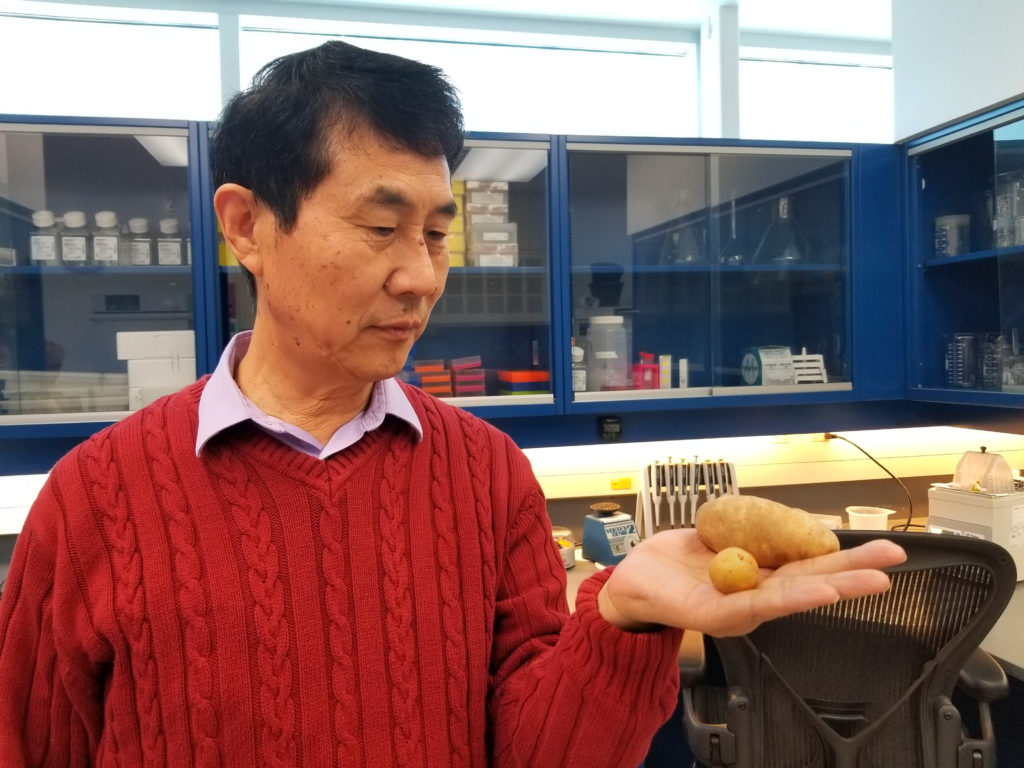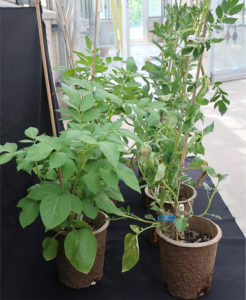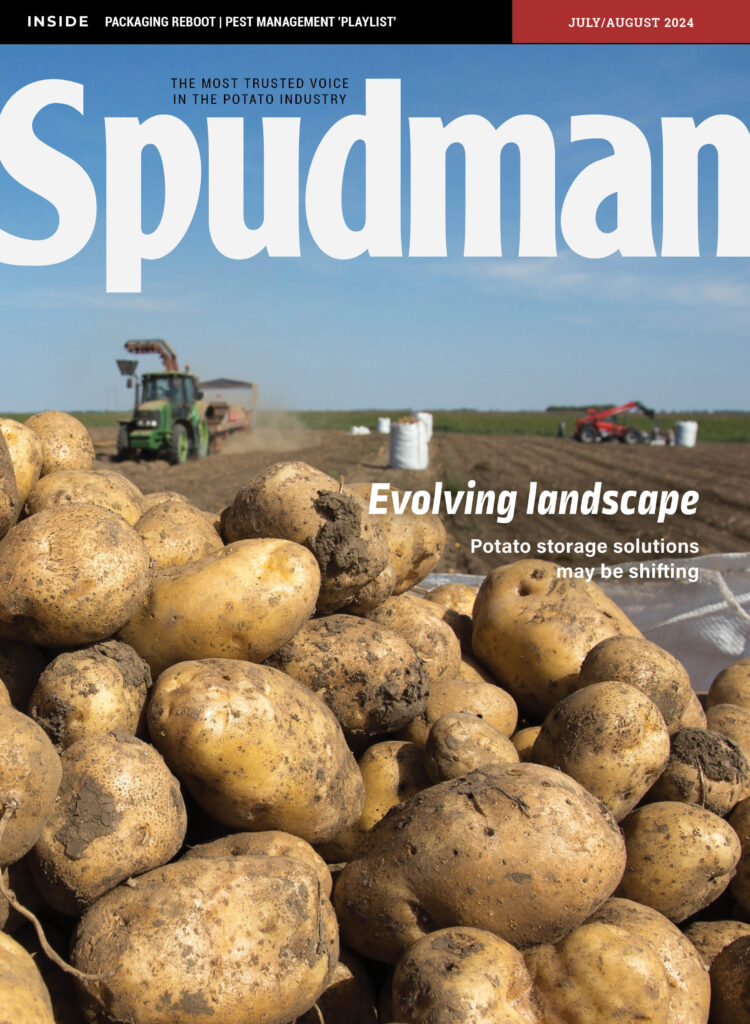
Rising temps have Canadian researcher studying heat stress in potato plants
In recent years, rising global temperatures have left potato farmers anxious as their crops struggle to survive lengthy dry cycles that are often marked by extremely high temperatures.
Potatoes grow best in temperate conditions; yield and quality suffer greatly under extreme weather conditions. Hope may be on the horizon, though. A recent study, led by Xiu-Qing Li, Research Scientist, Fredericton Research and Development Centre, Agriculture and Agri-Food Canada, reveals that some varieties can handle heat stress better than others.

Li and his team heat stress tested 55 of Canada’s most popular potato varieties. The results offer researchers insight that could lead to the development of varieties that can withstand and even thrive in excess heat.
During the study, potatoes were grown indoors in a greenhouse. Daytime temperatures soared to 35°C (95°F) during the day, but were lowered to 28°C (82.4°F) overnight. The control group was grown under more temperate conditions where daytime temperatures reached 22°C (71.6°F). Overnight, the temperature in the control group greenhouse was lowered to 18°C (64.4°F).
In their comparisons, the researchers looked at chlorophyll content, plant height and mass of the largest tuber produced. Interestingly, Li and his team found heat stress impacted tuber mass less in some varieties, while it greatly impacted mass in others. Furthermore, potato cultivars with lower mass were shorter in stature and had more leaf chlorophyll content.
All potatoes grown under heat stressed conditions had smaller leaves and tubers compared to the control group. Under high heat conditions, Russet Burbank performed particularly poorly, producing only a single, very small tuber. Varieties that showed the highest tolerance include Chieftain and Eramosa.
“We now know that there is a correlation among changes of plant height, the chlorophyll content in the leaves, and the tuber mass under heat stress,” said Li. “These findings on genetic variation of potato varieties will serve as a basis to identify the genes responsible for heat tolerance, improve existing varieties and breed new heat-tolerant varieties.”
Heat stress in potato a global problem
According to an October issue of North American Potato Market News (NAPMN), heat and drought in Canada, particularly in the Maritime region, which is known for its potato production, has had a great impact on the country’s overall potato crop. Recent figures show it’s expected to be 98.8 million cwt, down 7.7 million cwt over 2019. Production in the province of Prince Edward Island will fall to its lowest since 2001, and it’s expected that New Brunswick’s crop will be its smallest since 1973. While much of this can be attributed to wet weather as well, drought has also played a role.
In Ontario, potato farmers discovered longer-than-usual tubers, which experts believe is due to heat stress. Ontario experienced a heat wave earlier in the summer, which is thought to have disrupted plant physiology and development. Stress has manifested as knobs, sprouts and odd shaped tubers.
In 2018, hit by high temperatures and lengthy periods of drought impacted potato yields in the UK as well. That year, they recorded their smallest potato harvest of the previous six years. Producers harvested 700,000 fewer tonnes (about 770,000 U.S. tons) of potatoes that year; overall tonnage fell to 4.9 million tonnes from the five-year average of 5.6 million tonnes.
In Belgium and The Netherlands, both known as great potato-growing regions, farmers have been hit with extremely difficult growing conditions as a result of extreme heat and drought during both the 2018-19 and the 2019-20 growing season.
Drought and heat waves aren’t restricted to other countries. In the U.S., the Department of Agriculture recently announced the availability of more relief funds for Maine potato farmers. Statewide, drought conditions have severely impacted producers and stymied potato production. In a joint statement, Maine Governor Janet Mills welcomed the support.
Back in Canada, the study’s results show that heat stress signals plants to switch from tuber development to plant growth aboveground. Li and his team will continue their studies, looking, specifically, for the genetic variations in heat-tolerant varieties that could switch production from aboveground to the tubers below.
David De Koeyer, Agriculture and Agri-Food Canada potato breeder, said he and his team plan to continue their focus on potato performance under conditions brought on by climate change. They have a variety of growing sites across the country. For now, though, he will continue the greenhouse study with Li, comparing results to field trials that have been conducted on variable weather conditions.
Top: Research by Xiu-Qing Li of the Fredericton Research and Development Centre, Agriculture and Agri-Food Canada in New Brunswick shows some potato varieties handle heat stress better than others. Photo: Fredericton Research and Development Centre.







